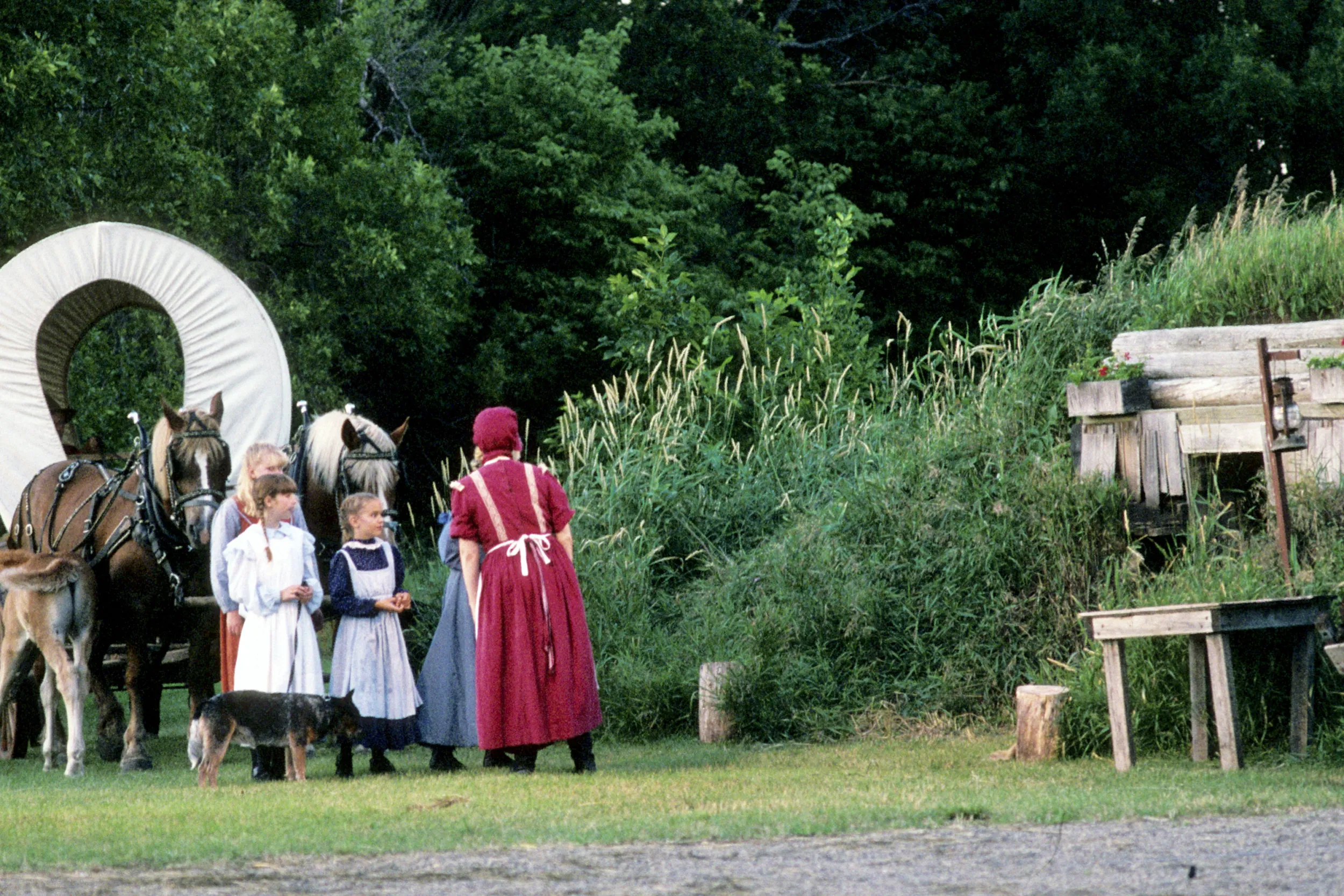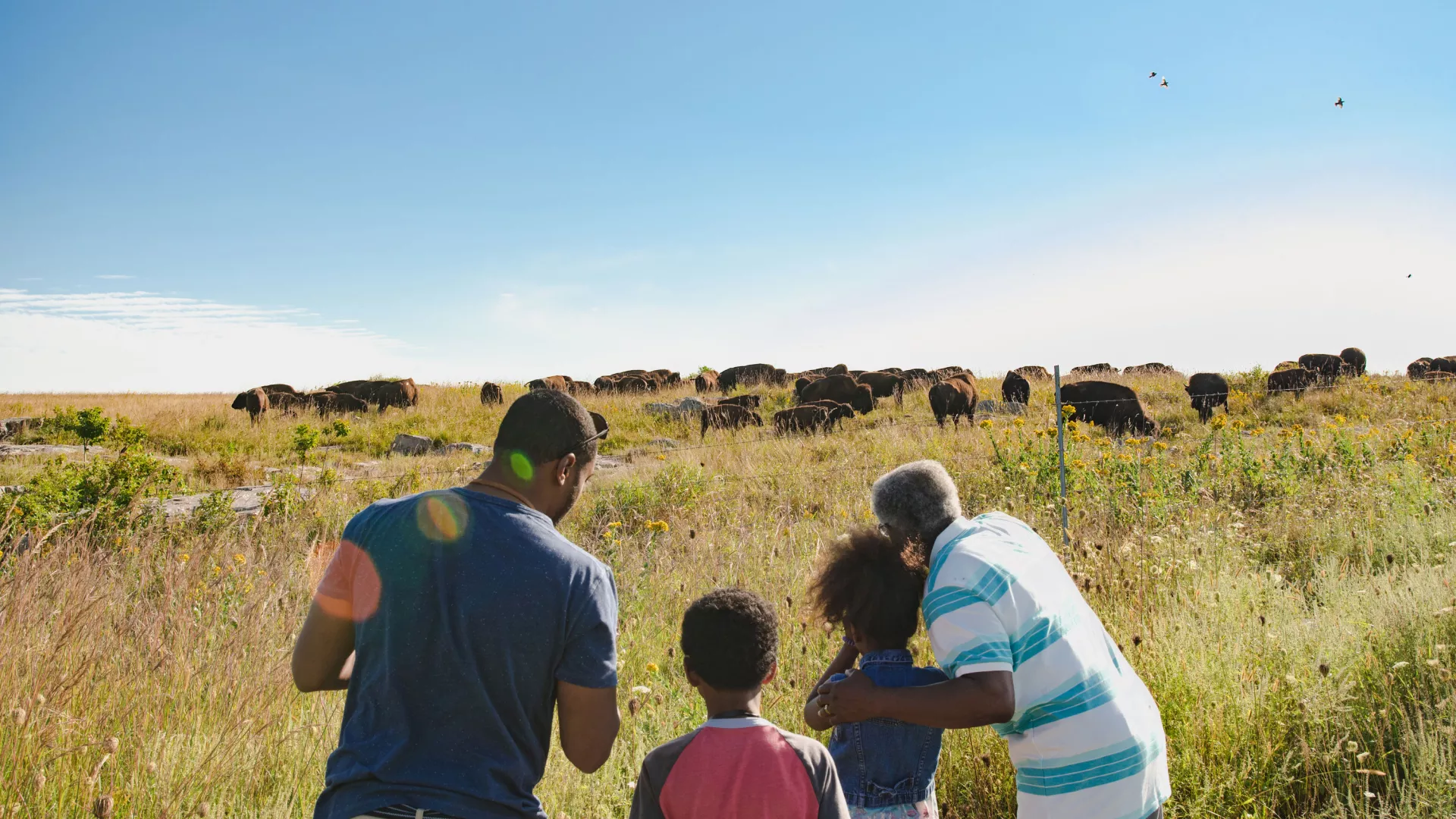
- Home
- Regions
- Prairielands
Where to See Minnesota's Native Tallgrass Prairie
Less than two hours outside the Twin Cities, you can reach remnants of rolling and pancake-flat prairie, where summer winds ripple grasses and flowers like a sea. Minnesota’s pioneers persistently carved up most of the state’s prairie into 40-acre farms that have grown and merged with each generation. The original tallgrass prairie that once covered 170 million acres of North America was whittled down to less than 4 percent of that range.
Here’s where you can see what remains of that original prairie and catch a colorful, seasonal glimpse of what the state once looked like.
Climb Blue Mound & See Bison
Blue Mounds State Park ranks among the most iconic landscapes of southwestern Minnesota, with its blend of wild prairie, majestic outcroppings of pink Sioux quartzite, and even a herd of bison. Look for occasional rock climbers ascending the 100-foot-high quartzite cliff, which is the most beautiful and dramatic early in the day or near sunset. Morning is also the best time to spot bison grazing in the 1,800-acre park.
Hikers should keep their eyes open for wildflowers, including wispy prairie smoke and yellow prickly pear cactus tucked into wild grasses. The visitor center, with its sweeping views, provides more details about tallgrass prairie and the area’s geography, and staff can help with camping reservations for the more than 70 sites, including a new tipi.
To admire beautiful images of the prairie, head to nearby Luverne, where the Brandenburg Gallery showcases Blue Mounds State Park and other wild places from his work in Minnesota and beyond, including assignments for National Geographic. Gallery profits helped the U.S. Fish and Wildlife Service establish the 800-acre Touch the Sky Northern Tallgrass National Wildlife Refuge about 10 miles from the park.
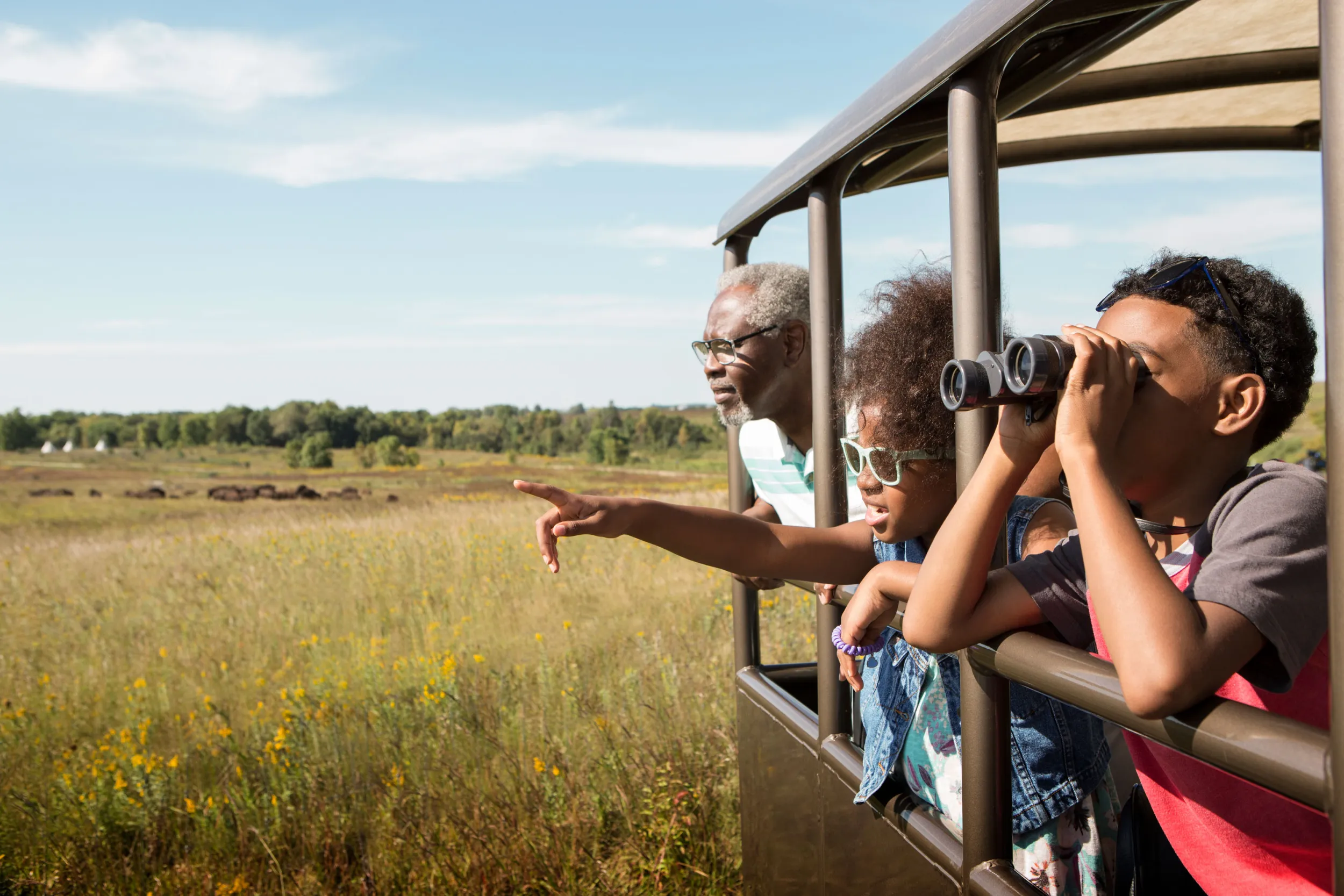
Bike Along Prairie Flowers & Tall Grasses
For a summer bike ride through rural farmlands and remnants of Minnesota’s tallgrass prairie, head to Lake Louise State Park near the southeastern town of LeRoy. The 20-mile Shooting Star State Trail often parallels Highway 56, which is known as the Shooting Star Scenic Byway.
The rare shooting star flower, also known as wild prairie primrose, can be spotted here, along with native orchids and showier flowers such as coneflowers and prairie clover. Look for educational kiosks and walkable trails near the Taopi Prairie Interpretive Area and Shooting Star Prairie State Natural Area.
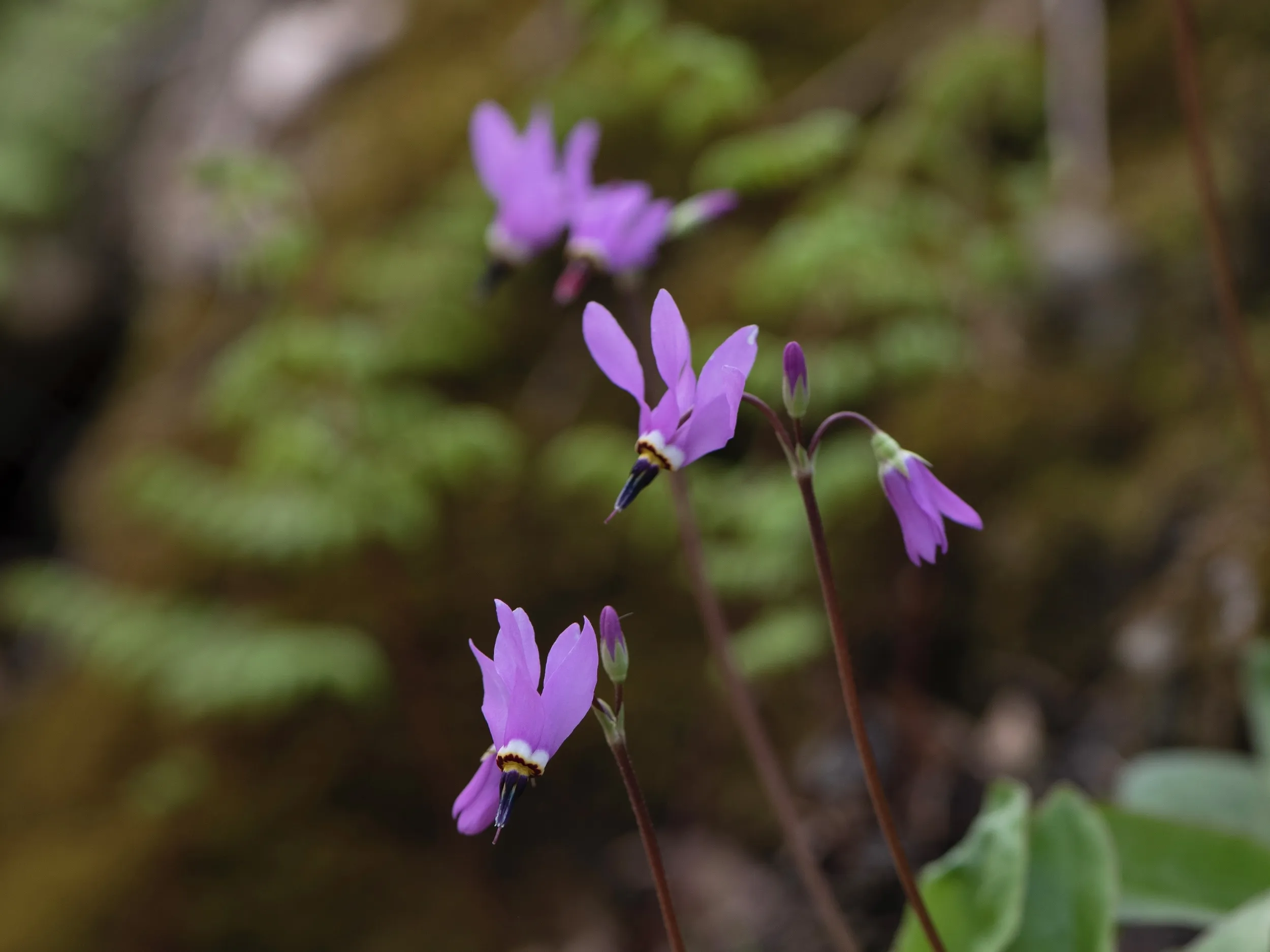
Explore Prairie Wetlands
The Prairie Wetlands Learning Center near Fergus Falls features a museum and acreage dedicated to preserving America’s prairie pothole ecosystem, an area rich with small ponds that are essential for migrating birds, especially in the spring. Explore four miles of pretty trails, many with interpretive signs, or go easy on the one-mile Tatanka Trail. Go in early spring for the best bird-watching or in summer to see wildflowers and grasses in full glory.
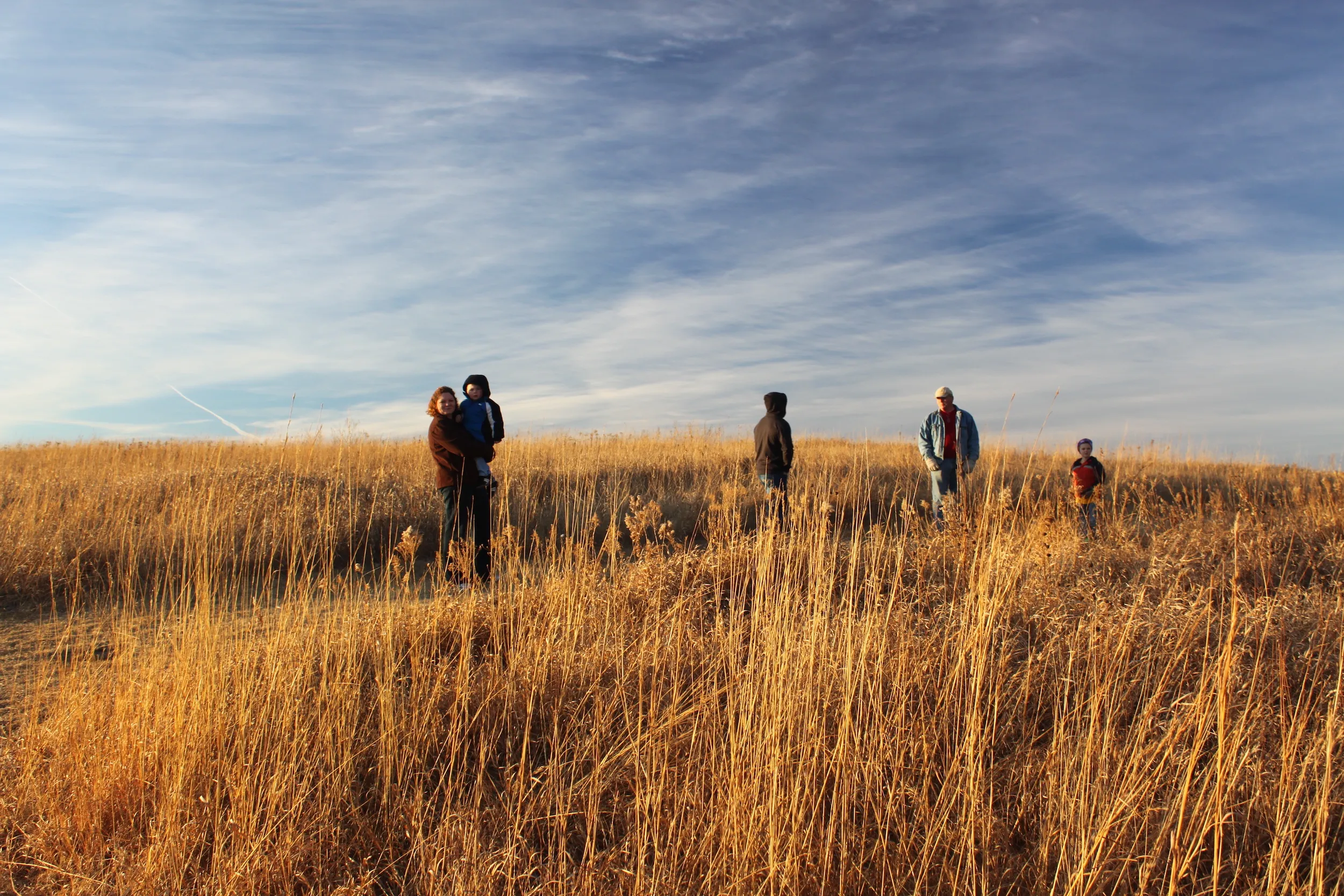
Flock to Bluestem Preserve
Visitors can spot storms from miles away when looking across the 6,000-acre Bluestem Prairie Preserve, a rare tallgrass prairie that adjoins Buffalo River State Park near Fargo-Moorhead. Birders know to reserve a coveted spot in a blind and to arrive before dawn in the early spring. Stealth and quiet allow them the rare chance to see and hear prairie chickens “boom” and do their mating dance. Bobolinks, upland sandpipers and marble godwits also attract birders and add their songs to the quiet rustle of the prairie.
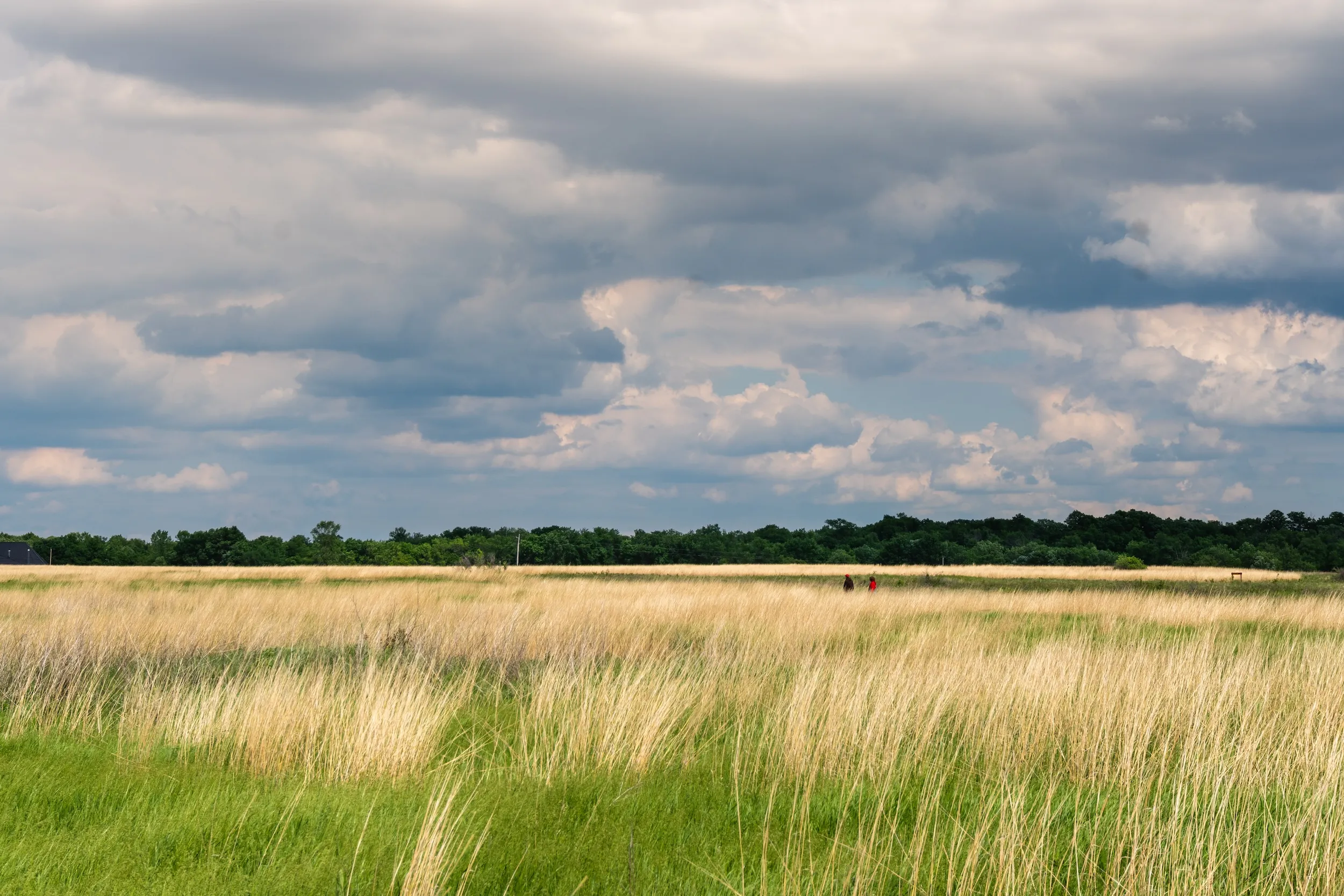
Experience Life on the Prairie
This daunting prairie landscape and pioneers’ struggles to tame it became famous when Laura Ingalls Wilder wrote the "Little House on the Prairie" series about her experiences growing up in the 1870s.
Almost every weekend in July, horses pull a creaking, jostling covered wagon across the expansive Wilder Pageant grounds in the tiny town of Walnut Grove, where the legacy of Laura looms large. A cast of more than 50 actors brings her childhood back to life, a town tradition for more than 35 years since the “Little House on the Prairie” TV series became an international hit in 1974.
Audiences fill the outdoor theater and surrounding hillside to see the family’s shock when Pa moves them into a sod house, their struggles with grasshopper plagues that destroyed crops, and the battles with real flames of a prairie fire. There’s also the joy of building a town church, meeting new friends in the farming community and a Walnut Grove Christmas gathering.
The Laura Ingalls Wilder Museum fills several historic buildings with pioneer artifacts, "Little House" books in other languages, and newspaper articles and exhibits on the TV series. The town also welcomes former stars of the TV show during pageant weekends.
